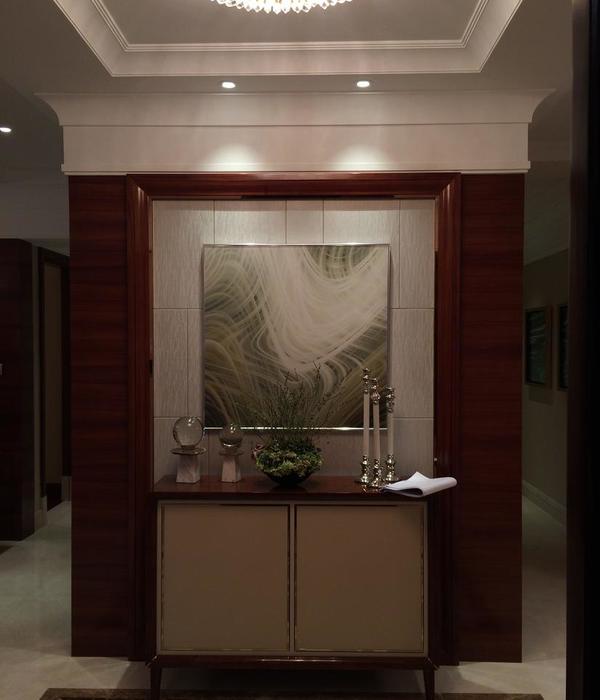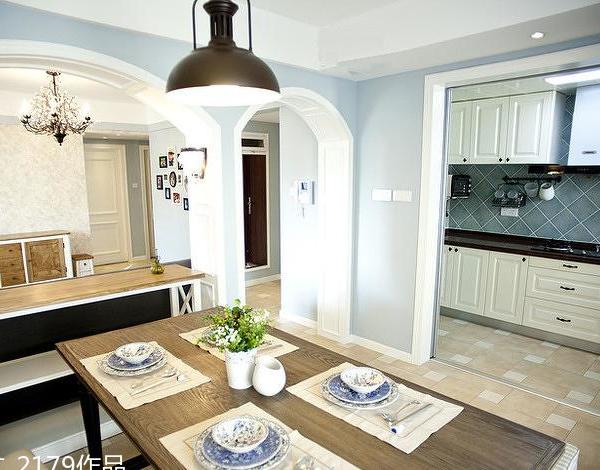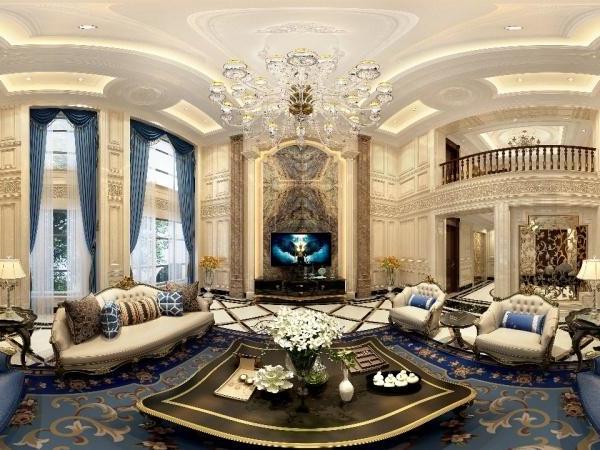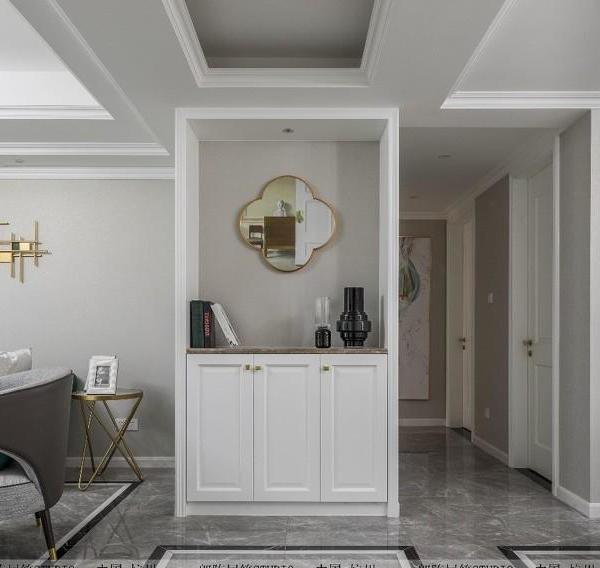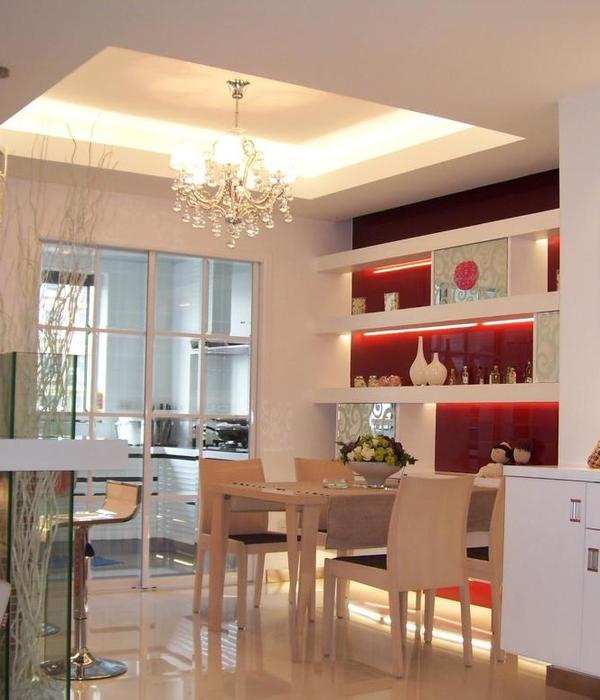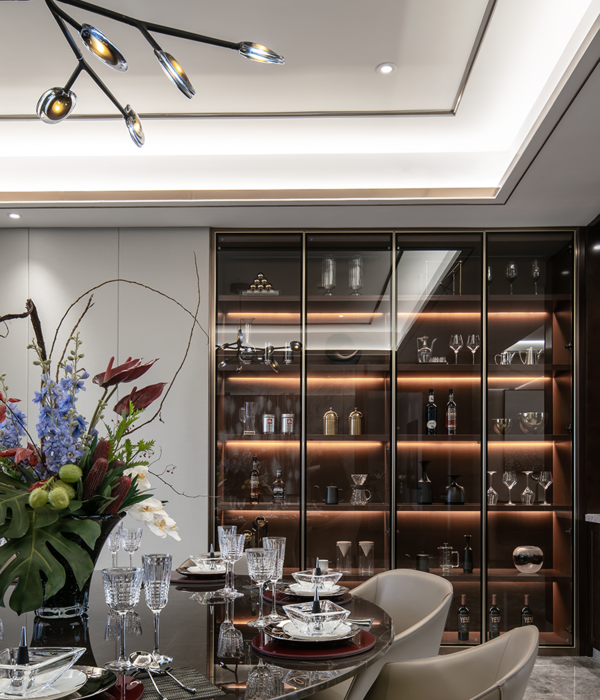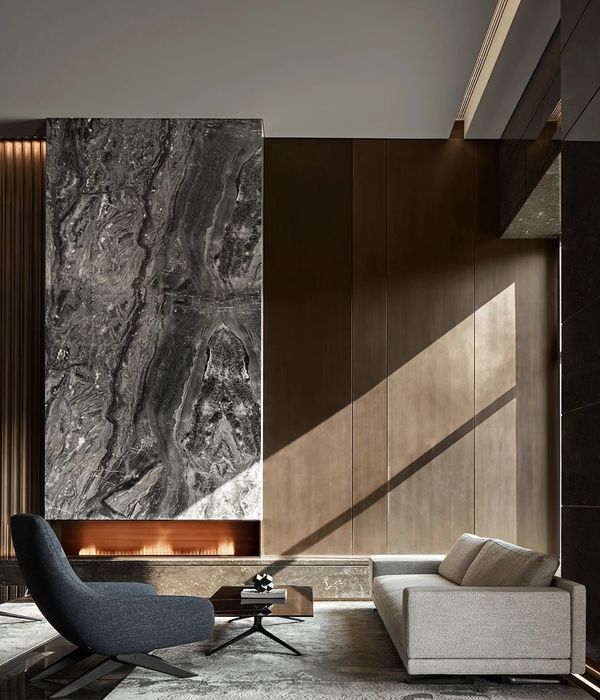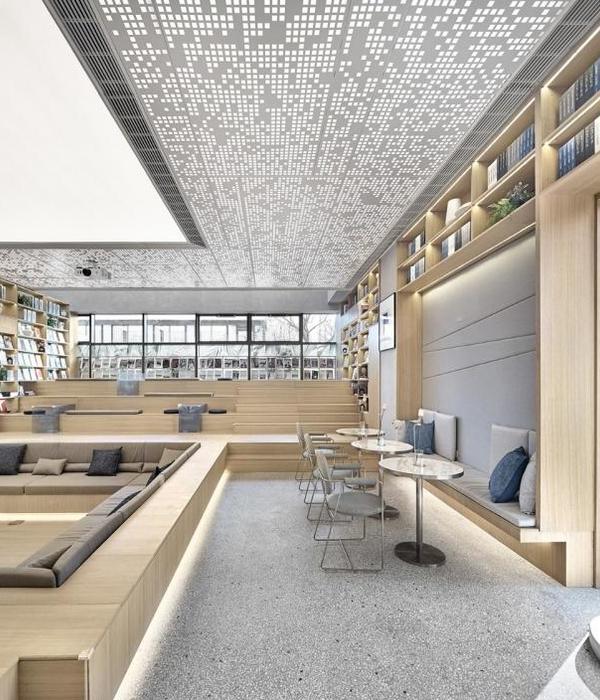来自
ASLA
Water Calculation and Poetic Interpretation by
Hoerr
Schadt
Landscape
Architects
. 更多关于他们,请至:
.
Appreciation towards
ASLA
for providing the following description:
项目陈述
PROJECT STATEMENT
从1993年开始,芝加哥壮丽大道中央就在建设一条大胆的景观带。这条景观带长2.3英里,从芝加哥环道的罗斯福路开始,横跨33个街区,一直通到黄金海岸中的橡木街。其中种有多种多样的季节性植物,它们形体庞大,颜色丰富,交织出复杂而美丽的肌理,为街道带来了无尽活力。项目最早由Richard M. Daley市长、芝加哥商业协会和民间领导人于1991年提出,旨在美化这片城市中最重要的地产区块,将其变成一个无与伦比的公共空间。
三个不同的区域经过仔细规划,每年都以不同的姿态被安装在区域中,呼应季节的变化。最早的设计团队在项目的头20年中制作了超过60套不同的方案,他们的工作现由一个新的景观公司接管。由于这个项目大获成功,芝加哥随之在超过100英里的道路中央区域设置了景观空间。许多其他城市也对其进行效仿,壮丽大道中央景观俨然成为了城市民用景观设计的国际范本。
Since 1993, a bold strip of beautiful landscape has run down the median of Chicago’s Magnificent Mile. It spans the 33 blocks (2.3 miles) from Roosevelt Road in Chicago’s Loop up to Oak Street in the city’s Gold Coast, enlivening the prominent street with seasonal plant displays of enormous scale, color, complexity, and texture. The project originated in 1991 as an initiative introduced by Mayor Richard M. Daley and a committee of prominent Chicago business and civic leaders to beautify one of the city’s most prime pieces of real estate and transform it into a stunning public space.
Three different displays are carefully planned and installed annually so as to remain seasonally appropriate. The original design team produced more than 60 different schemes over the project’s first 20 years; today, a new landscape firm carries on the work. Due to the project’s success, Chicago has since landscaped more than 100 miles of median space. Many other cities have followed suit, making the Magnificent Mile median an international model for civic urban landscape design.
△大胆而美丽的设计,A Bold, Beautiful Plan
1992年,Daley市长发布了一项美化密歇根大道20年计划。芝加哥市将为最初的中央花坛提供资金。北密歇根大道上的零售商和业主将在接下来的20年中每年捐赠20万美元用于项目维护。
In 1992, Mayor Daley proposed a 20-year plan to beautify Michigan Ave. The City of Chicago would fund the initial median planters. Retailers and property owners on North Michigan Avenue would donate $200,000 per year for 20 years for maintenance.
Photo Credit: Hoerr Schaudt
项目说明
PROJECT NARRATIVE
1993年,密歇根大道街景发生了翻天覆地的变化,而这些变化全部起源于Crate&Barrel旗舰店前的四个花坛。这些花坛于1991年建成,其中种满了不同形状和大小的花朵,五彩缤纷,给密歇根大道单调的灰色城市色调增添了一抹亮色,甚至引起了Richard M. Daley市长的注意。Daley市长曾经大力推行芝加哥公共空间绿化,这次,他向Crate&Barrel的创始人Gordon Segal询问了花坛的设计师、造价以及他是否愿意将同样的设计运用在墨西哥大道中央。双方一拍即合,开始了在密歇根大道中植入美丽景观的合作。
项目目标
密歇根大道街景项目在一开始就有着明确的目标,即通过有趣且实用的设计将密歇根大道变成一个美丽的公共活动场所。这样的景观项目在芝加哥乃至全美城市都是十分缺乏的。Daley市长以及专为实现这一项目而成立的密西根大道街景协会深知城市绿化的价值远不止视觉上的美观,这个项目不仅可以让密歇根大道变得更加美丽以吸引更多游人,还可以吸引更多的投资。随着来此购物的人增多,街区的人口将不断增长,吸引地产商在此投资。这些投资所带来的财政和社会收益将远远超过设计和建造该项目所消耗的成本。
设计挑战
密歇根大道街景设计一开始面临着无数有关组织和设计的复杂问题:
– 资金
该街景项目是芝加哥最早的公私合作项目之一。1992年Daley市长从芝加哥城市基金中拨出了项目的第一笔资金,用以设计第一季植栽,建造中央花坛,购买原料和施工。作为交换,他要求北密歇根大道上的零售商们在未来的二十年间每年出资20万美元,以对项目进行维护保养。由于河流南侧到罗斯福路区域中没有足够的私人投资者来支付项目的维护费用,这段项目的花费由芝加哥市承担。密歇根大道街景协会花费了将近一年时间才募集到了足够资金。
– 调和不同观点
项目的景观建筑师由设计并建造了Crate & Barrel旗舰店前的花坛的年轻设计师担任,他必须要平衡项目中不同利益相关者相互矛盾的需求,在不改变项目主要目标的前提下做出一定的妥协。许多出资者要求沿边道种植高大的树木,但是他们并没有考虑到当树木成熟时将会形成密度过高的硬景观,不仅不会带来视觉享受,还会如同墙壁一般遮挡看向店面的视线,影响商业发展。此外,景观设计师还要应对希望在花坛上使用华丽装饰的建筑师。如果花坛被设计得过于复杂,施工和维护的成本将大幅增加,导致用在植物上的预算急剧减少。项目的主要目标是创造一片充满活力的自然景观,通过丰富的颜色、形态和尺度激活密歇根大道。若植物的预算不能被保证,那项目将无法实现其最初的目标。
– 保证项目长期耐用
选择何种植物对于整个项目来说是一个挑战。这些植物必须要足够坚韧,能够忍受严酷的气候、污染物和街道上的交通,不需要太多的维护就可以保持美丽。这要求设计师必须精确挑选植物种类并制定一个完善的种植计划,让植物可以轻松适应变化的环境,并且不会影响外观或增加成本。
设计和使用的历史
回顾密歇根大道街景设计的历史,其基本的设计方案并没有发生改变。每年,三个分别呼应春季、夏季和秋季的独特装置被安装于此,年年设计都有所不同。总共80个中央花坛横跨从环道的罗斯福路到密歇根大道北端的橡木街的33个街区,总长2.3英里,提供了27000平方英尺可种植空间。这三个花坛的造价约为20.4美元每平方英尺。多年来,设计团队和零售规划师合作,共同保证设计和街道上精心设置的橱窗相匹配。大多数维护都是在夜间游人稀少的时候进行,让员工可以高效工作。
三月到六月为春季,景观植物通常以郁金香为主,通过变化的颜色和图案保持每年的独特性。不同种类的球茎被密集地混种在一起,花期有早有晚,尽量保证几个月中一直有花朵盛开。到了六月,夏季花坛替代了春季,其中经常种有不同类型、高度、形状和颜色的茂盛植物。有些年这里会展示了中西部的多年生植物,有些年则种满了来自热带的奇花异草。九月到十一月是秋季花坛的展示期,由于温度不断下降,更为耐寒的植物如甜菜和菊花成为了主角,带来了与之前不同的氛围。到感恩节使其,整个过程又开始了新一轮循环。秋季植被被移除,土壤中重新种下了超过11万个郁金香球茎和8万多个风信子球茎,上层铺以绿色草皮,使花坛看上去更有节日氛围,并且可以保护球茎不受严寒侵扰。春季来临时,这片草坪将被卷起,员工们开始浇水并着手进行初步维护,以迎接新的鲜花盛开的三月。
设计团队在运用了分层种植技术,以保证花坛在任何季节都可以自始至终保持美丽。最底层为结构植物,接着覆上充满整个花坛的植物作为填充层,最上层则种以精致的花朵以及补充植物。一株植物枯萎后,与其相邻的植物将快速生长并占据它的位置,把空缺控制在最小,几乎不需要任何人工维护。
社区影响
在较小的尺度上,密歇根大道街景项目为芝加哥居民带来了各种各样的好处。由于项目的维护被芝加哥市承包给了两家顾问公司,这片街景成为了一个永久的就职岗位。其中一家公司由安全港基金会运营,培训并雇佣无业青年、老兵和戒毒人员来进行花坛的保养。
街景花坛还成为了一个公共机构,全芝加哥的园艺师都会来这里寻找种植材料。每到花坛换季的时候,移除的植物将被捐赠出去或重新栽培,减少浪费的同时帮助美化了密歇根大道之外的城市环境。
对公共领域、专业和实践方面的影响
从1993年到2013年,最初的景观设计师和他的团队为密歇根大道中央花坛设计并实施了超过60中方案。项目为芝加哥带来了超乎想象的正面影响。这一街景设计在整个城市内激起了日常种植风潮,并且刺激了正式景观项目的发展。由于项目本身的成功,芝加哥市已经设置了超过100英里的道路中央景观,以美化更多的街道和社区。从专业角度来讲,密歇根大道街景项目为类似的景观提供了一个模型,为得梅因和底特律等不同城市的发展带来了灵感。它以令人吃惊的手法将自然和人工环境编织在了一起,年复一年,让芝加哥乃至全世界都变得更加美丽。
△密歇根大道街景,Michigan Avenue Streetscape
芝加哥,伊利诺伊州,持续了20年的开满鲜花的壮丽大道,Chicago, Illinois 20 Years of Magnificent Mile Blooms
Photo Credit: Steven Gierke
△名为壮丽,实则荒凉,Marketed as Magnificent, Bleak in Reality
1993年以前,密歇根大道缺乏统一的景观设计。不过,1991年的时候Crate & Barrel在店门口设置了四个12×14英尺的盒子花坛,并引起了市长Richard M. Daley的注意。他让Crate & Barrel的创始人Gordon Segal设计了一套使用类似花坛的密歇根大道景观方案。
Prior to 1993, Michigan Avenue lacked unified landscape design. However, in 1991 Crate & Barrel planted four, 12-foot by 14-foot boxes in front of their store that caught Mayor Richard M. Daley’s attention. He called Crate & Barrel Founder Gordon Segal to develop a plan to landscape Michigan Avenue with similar planters.
Photo Credit: Left-side: Hoerr Schaudt, middle: Drew Becher, top-right: Hoerr Schaudt, bottom-right: Judith Bromley
△1933:第一年,1993: The First Year
第一批花坛建成于1993年。其中的植物将随着春、夏、秋三季改变以适应不同季节的特征,为密歇根大道带来活力。
The first planters were installed in 1993. Displays would be changed out in Spring, Summer, and Fall to add seasonally appropriate interest and vibrance to Michigan Aveune.
Photo Credit: Hoerr Schaudt
△简单的花坛中美妙绝伦的植物,Gorgeous Plants in Simple Planters
花坛由混凝土直接浇筑,用于种植中央景观。它们保护植物免于受强烈日照,交通和道路污染物的影响,且维护成本低廉。这些花坛依街道网格设置,或高或低,充满趣味。
Straightforward concrete planters were built to house the median landscapes. They protect the plants from excessive sun, traffic damage, and pollutants like road salt without costing large amounts of money for structural upkeep. They vary in size up and down the street to provide interest and comply with the design of the street grid.
Photo Credit: Ron Schramm
△春季的郁金香,Tulips in the Spring
每年感恩节,11万颗郁金香球茎和8万颗风信子球茎被种下。它们会在三月份开花并且将一直持续到六月。植物的品种每年都会变化。在寒冷的月份里,球茎上方会被覆盖一层御寒用的草皮。
Every Thanksgiving, 110,000 Tulips and 80,000 Muscari bulbs are planted for the Spring display, which comes up in March and lasts through June. Varietals vary each year. A layer of sod shelters the bulbs during the cold months.
Photo Credit: Steven Gierke
△夏季和秋季植物的变化,Variety in Summer & Fall
每年的六月到九月为夏季花坛,九月到十一月为秋季花坛,二者中的植物每年都在变化。在早些年里,如图片所示的1996年,花坛中较多使用当地的中西部植物。每个花坛都对盛放状态下植物的高度和高度进行了考量,不会妨碍到交通。
Plantings vary in Summer (planted June – September) and Fall (planted September – November). In the early years—like 1996, pictured here—selections tended toward native Midwestern plants. Full bloom heights and densities are considered for each planter so that traffic is left unobstructed.
Photo Credit: Hoerr Schaudt
△分层种植,巧妙生长,Layered Planting, Smart Growth
植物被分层种植。最底层为结构植物,接着覆上充满整个花坛的植物作为填充层,最上层则种以精致的花朵以及补充植物。一株植物枯萎后,与其相邻的植物将快速生长并占据它的位置,把空缺控制在最小,几乎不需要任何人工维护。
The plants are installed in layers. Structural plants go in first, then an infill layer—the plants that typically spill over the planters—and finally a layer of more delicate flowers and fillers. If one plant dies, an adjacent plant will grow into its place, minimizing holes and requiring very little maintenance.
Photo Credit: Scott Shigley
△超过60中种植设计带来不断变化的景色,Changing Style Over 60 Planting Designs
基础层在一年中保持不变,植物的选择则年年不同。现代的设计和中西部地区没有的植物交织在一起,为芝加哥带来了新鲜的景观。设计团队经常和零售规划师合作,以使植物的颜色和形式与密歇根大道上橱窗的设计潮流相匹配。
The basic layered technique has remained consistent across the years, but the chosen plants have not. Contemporary designs weave together many plants not found in the Midwest to bring something new to Chicago’s landscape. The design team often consulted with retail planners so that colors and styles coordinated with window design trends along Michigan Avenue.
Photo Credit: Judith Bromley
△达到新高度,Reaching New Heights
夏季种植的4万株植物中经常有矮树和高草。树木被种在花坛底部以避免妨碍交通或遮挡看向密歇根大道旁橱窗的视线
Small trees and tall grasses often account for many of the 40,000 plants installed in the Summer. The trees are planted in beds that won’t obstruct traffic or block views to prominent Michigan Avenue retail windows.
Photo Credit: Steven Gierke
△绿化南密歇根,Greening Up South Michigan
和北密歇根大道有零售商私人出资不同,芝加哥市承担了芝加哥河南侧中央景观的费用。每年三次轮换植物所需要的平均花费为20.4美元每平方英尺。
Unlike on North Michigan Avenue, which is privately funded by retailers, the City of Chicago funds the median landscape south of the Chicago River. On average, it costs $20.40 per square foot for three plant rotations per year.
Photo Credit: Henriquez Studio
△在夜晚进行改动,Transformation Overnight
变换植物的工作都在夜晚进行。设计团队和顾问团队携手合作,在花坛中种入新的花草树木。要完成80个花坛中87000平方英尺的替换工作通常需要一整周时间。
Work happens overnight when it’s time to switch displays. The design team works side-by-side with a team of consultants to place and plant the new flowers, trees, and grasses. The night work typically takes a full week to plant the 87,000 SF spread across 80 planters.
Photo Credit: Scott Shigley
△秋季深沉的颜色和肌理,Deep Color & Texture in the Fall
每年秋季花坛中都会种植15000株单独的植物。有些植物沿用自夏季花坛;移除的材料则被捐赠给温室或者在可能的情况下重新用于栽种。颜色艳丽的大型植物同样适用于秋季。过于冷暗的色调无法对繁忙的街道产生足够冲击。
15,000 individual plants are installed each Fall. Some plants carry over from the Summer beds; ripped-up material is donated to conservatories or replanted, when possible. Fall still favors big shapes and bold colors. A palette that is too cool or subtle wouldn’t make a big enough impact on the busy street.
Photo Credit: Steven Gierke
△大受欢迎的照相点,A Popular Photo-Op Stop
全年中,无数游人会停在花坛前照下一些照片,Throughout the year, many people stop to take photos in front of the planters.
Photo Credit: Steven Gierke
△“设计师将我们大胆的设计运用到了坚硬的城市环境中,为密歇根大道带来了难以想象的变化,其结果影响深远。在密歇根大道的中部,自然、商业和建筑元素以多变的姿态融为了一个整体,引来了全国不同城市的争相效仿。” —— Crate & Barrel创始人,Gordon Segal
This design vision took Michigan Avenue places we never imagined by applying adventurous design to a gritty, urban environment. And the results of this vision are enormous. The Michigan Avenue medians synthesize natural, commercial, and architectural elements so dynamically that cities all across the country want to copy it.” —Gordon Segal, Crate & Barrel Founder
Photo Credit: Scott Shigley
In 1993, the Michigan Avenue Streetscape changed drastically for the better, and it all started with four parkway planters in front of the Crate & Barrel flagship store. In 1991, the retailer debuted planters that were overflowing with horticulture and flowers of different shapes, sizes, and colors. They gracefully popped against the drab city grays that characterized Michigan Avenue—so much so that even Mayor Richard M. Daley took notice. Daley, whose legacy includes the aggressive greening of Chicago’s public spaces, called Crate & Barrel Founder Gordon Segal to inquire about the planters: who designed them, how much did they cost, and was Segal interested in bringing that kind of design to the middle of Michigan Avenue? With that, the collaboration to spruce up Michigan Avenue with beautiful landscape design was up and running.
Original Project Intent
From its outset, the Michigan Avenue Streetscape project pursued a clear goal: make Michigan Avenue a beautiful public place via interesting-yet-pragmatic landscape design. This kind of landscape was lacking in Chicago—and cities across the United States—and Mayor Daley and the Michigan Avenue Streetscape Association (formed to oversee the implementation of the project) understood that greening the city would bring both intangible and tangible value. This was especially true on Michigan Avenue, one of Chicago’s most prominent streets. Not only would people want to come to Michigan Avenue if it were more beautiful, but they would want to invest in Michigan Avenue, too, in ways big and small. More people would come to shop, and real estate investors would be drawn by the street’s increasing popularity. The financial and social return on investment would far outweigh the costs to design and install the project.
Design Challenges
The original Michigan Avenue Streetscape faced a myriad of logistical and design complexities:
– Funding
The streetscape was one of Chicago’s first public-private partnerships. In 1992 Mayor Daley pledged the initial capital to design the first season’s plantings, build the median planters, and pay for purchasing and construction costs using a windfall of earmarked City of Chicago funds. In return, he asked the retailers on North Michigan Avenue (north of the Chicago River) to pledge $200,000 annually for the first 20 years in order to fund upkeep costs. The City of Chicago would pay for the streetscape south of the river to Roosevelt Road, as this area did not yet have the same level of private investor presence capable of maintaining the project. It took the Michigan Avenue Streetscape Association nearly a year to raise the funds.
– Resolving Competing Visions
The landscape architect—the same young designer who planned and installed Crate & Barrel’s parkway planters—had to balance the competing priorities of the many different project stakeholders, devising some compromises without detracting from the project’s strong vision. Many stakeholders argued for tall trees planted along the sidewalks. However, the design architect understood that, once matured, the trees would create too dense of a hardscape that wouldn’t read as visually stunning and would also block views of the retail windows, a legitimate business concern. He also had to argue against architects who were pushing for ornate planter designs. If the planters were too complex, they would cost too much to produce and maintain, leaving little budget for the actual plantings. If the plant budget was reduced too drastically, then the project wouldn’t achieve its main goal—to create a vibrant, natural landscape that enlivened Michigan Avenue through its colors, shapes, and scales.
– Ensuring Long-Term Durability
Selecting plants was a challenge in and of itself: varietals would have to be hardy so they could endure the harsh climate, pollutants, and traffic found on the street and remain beautiful with very little maintenance. This required picking a precise mix of plants and laying out a planting scheme that could easily adapt to changing conditions without sacrificing visual appeal or increasing costs.
History of Design & Use
The basic design formula for the Michigan Avenue Streetscape has remained the same over the course of its history. Three unique installations that correspond with Spring, Summer, and Fall are installed each year; no two years feature the same designs. All told, the 80 median planters cover 27,000-square-feet of plantable space and run the entire 33 blocks (2.3 miles) between Roosevelt Road in the Loop and Oak Street at Michigan Avenue’s north end. It costs approximately $20.40 per square foot for the three plant rotations. In many years, the design team coordinates with retail planners to make sure the designs complement the street’s elaborate store windows. Most maintenance takes place at night, allowing crews to work efficiently.
The Spring season (March – June) always features Tulips, but the varietals change each year so that colors and patterns remain unique. The bulbs are planted at a high density and mix together early and late varietals so that the display blooms for as long as possible. In June, the Summer display goes in—it always features robust, exuberant plants of different types, heights, shapes, and colors. Some years, Midwestern perennials and grasses have been on display, while other years have featured tropical exotics. In Fall (September – November), cooler plants, like Chard and Mums, play off the falling temperatures and changing atmosphere. The process begins again around Thanksgiving. The Fall installation is ripped up, and over 110,000 Tulip and 80,000 Muscari bulbs are planted. A layer of green sod is laid down that looks festive for the holiday season and also protects the bulbs from the winter elements. It is rolled up in Spring when watering and preliminary maintenance begin for the new March bloom.
Regardless of the season, the design team deploys a layering technique to ensure that the planters start off and remain beautiful: structural plants are put in first, then an infill layer—the plants that typically spill over the planters—is added, and the final layer of more delicate flowers and fillers is planted. If one plant dies, a fast-growing adjacent plant will grow into its place, minimizing holes and requiring very little maintenance.
Community Context
At a secondary scale, the Michigan Avenue Streetscape has provided a myriad of benefits to Chicagoans. The streetscape functions as a permanent employment program, as its maintenance is contracted out by the City of Chicago to two consultant crews. A Safe Haven Foundation runs one of these crews and trains and employs at-risk youth, veterans, and people recovering from substance abuse to execute the required upkeep.
The streetscape planters also provide institutions and gardeners across Chicago access to plant materials. As each display is changed out, ripped-up plants are salvaged and either donated or replanted, keeping waste to a minimum and helping to further beautify the urban context at sites other than Michigan Avenue.
Impact on the Public Realm, the Profession, and Practice
From 1993 through 2013, the original landscape designer and his team developed and implemented over 60 original designs for the Michigan Avenue median planters. The overwhelmingly positive effects they have had on Chicago could not have been anticipated. Across the city, the streetscape designs have spurred both informal planting trends and formal landscape programs. Because of the project’s success, the City of Chicago has planted over 100 miles of landscaped medians in an effort to beautify more streets and neighborhoods. At the scale of the profession, the Michigan Avenue Streetscape has served as a model for similar landscape designs, inspiring installations in cities as diverse as Des Moines and Detroit. It is a project that weaves the natural and built environments together in surprising, inspiring, and unprecedented ways, year in and year out, creating a more beautiful Chicago and a more beautiful world.
PROJECT CREDITS
Lead Designer: Douglas Hoerr, FASLA
{{item.text_origin}}


